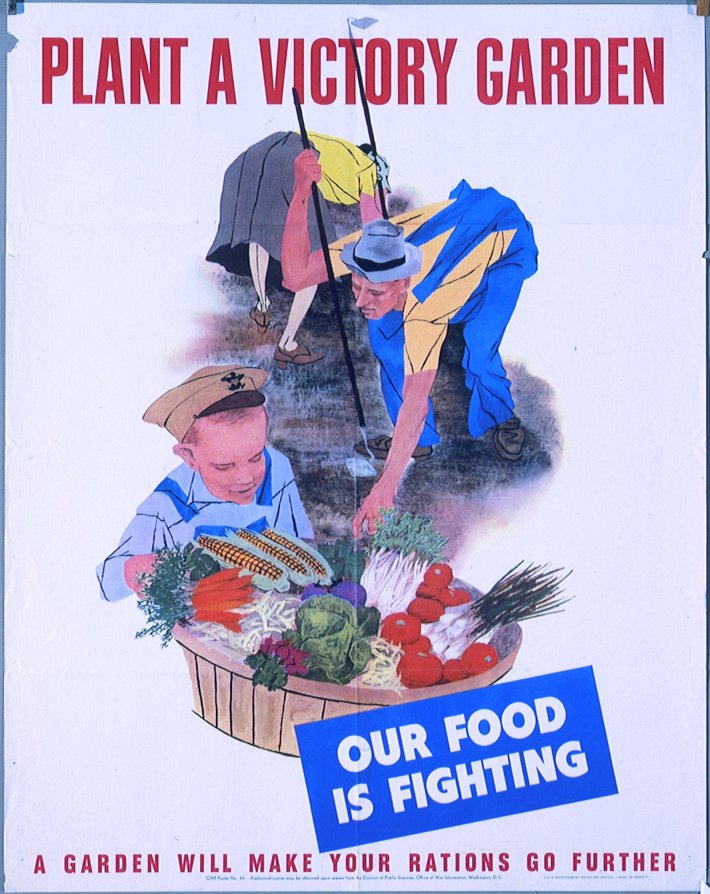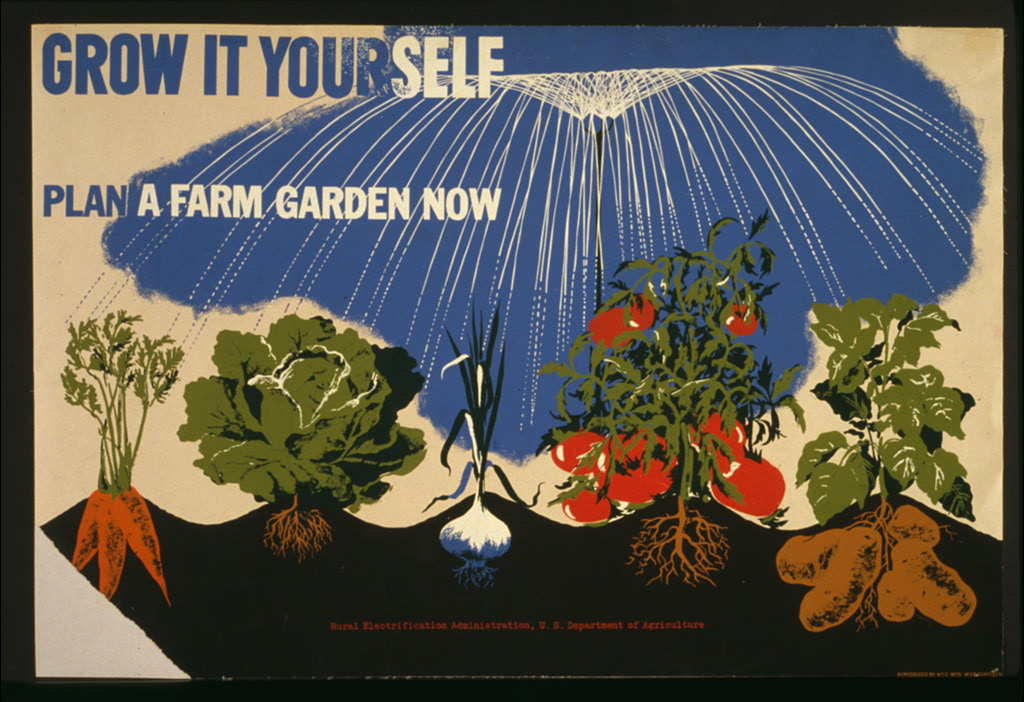
Normally, the Morgan Log House would be having its Military Might event this weekend: it’s an annual celebration and commemoration of those who sacrificed everything for the nation. This year is going to be a bit different. We’re hoping that we can have an event like Military Might later in the year, around Veterans Day.
With our “new normal” there has been a lot of talk about how our generation should look towards the Greatest Generation for advice and strength. With the existing reality of complications in the food supply chain, scarcity, and the dangers and unpleasantness of grocery shopping in the COVID-19 reality, perhaps we can look at the Greatest Generation. Perhaps we should plant a Victory Garden.
Rationing was an integral part of lived experience for those on the home front during the First and Second World Wars. Farms and traditional food sources were stretched to the limit feeding America’s army throughout the world and supplying Allies abroad. Civilians were encouraged to ration the food they purchased. They were also encouraged to plant a Victory Garden.
The Victory Garden Program launched in 1941, and encouraged civilians to plant gardens anywhere that they could. These gardens could supply America’s tables with fresh fruit and vegetables without putting a strain on traditional food sources. Surplus foods could be preserved to keep the harvest longer.
While America is not at war, keeping a Victory Garden could be a great way for us all to remember that we are all in this together: that the community benefits from the deeds of individuals. Likewise, in a world that has become very technologically focused, there is some pleasure in sinking ones hands into the dirt, planting a crop, and harvesting it.
Preparing to Garden

Before you plant there is some things you should consider!
Most vegetables do best in full sun, with over eight hours of direct sun a day. If you happen to have a lot of shade, stick to growing greens and herbs. Likewise, you’ll want to avoid areas that do not drain well, as most veggies need well drained soil to thrive.
If you have concerns about your soil, don’t fret! You can always build a raised bed garden, or plant your vegetables in a container garden. True Victory Gardening can happen anywhere!
Should I Start Seeds or Buy Plants?
Since it is May, buying pre-started plants might be the way to go.
However, there is some benefits in starting from seed. For starters, you can grow things that cannot usually be found at garden centers. However, you can buy many plants at nurseries, home improvement stores, and even some grocery stores.
Fertilizing
Want to make your harvest go the extra mile? You can always test the pH of the soil. Vegetables grow best in soils with a pH between 6.0 and 6.8.
Personal preference reins supreme here. You can choose from synthetic fertilizers, organic fertilizers, or even a mixture of the two. Fertilizer should be added to the soil immediately before planting. If it is put into the soil too early, its nutrients can be lost before your plants can benefit from them.
